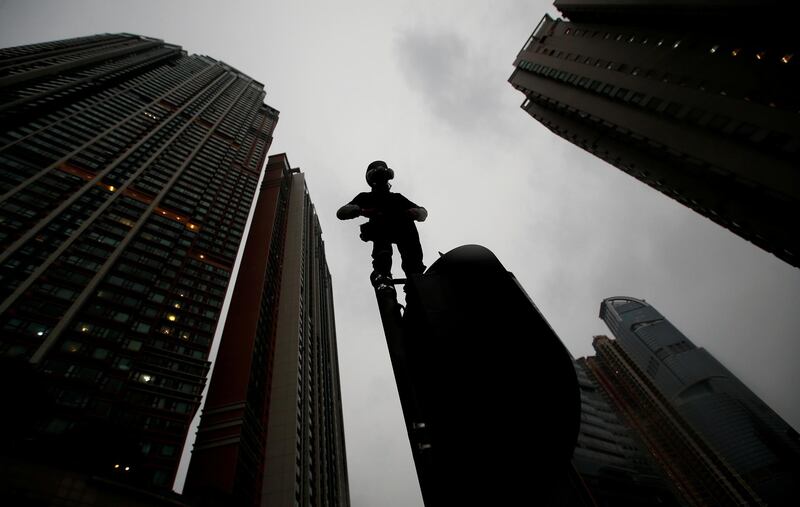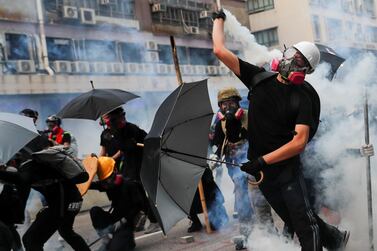Police fired water cannon at protesters for the first time during a second day of skirmishes on Sunday, ending a period of calm in almost three months of pro-democracy demonstrations.
The march was in Hong Kong’s New Territories, starting near the Kwai Fong rail station that has become a focal point of protesters since the last time police used tear gas, which was at the station this month.
There were chaotic scenes as a large crowd rallied in a park in an the outlying district, while another group of protesters took over a main street and police used tear gas to try to disperse them.
Tear gas was fired and water cannon trucks were also rolled out in a significant escalation.
A video circulated online of protesters who toppled a smart lamp post, which collects data from cameras and sensors, with an electric saw. Demonstrators, who held up umbrellas to hide their identities, cheered as it fell over.
They have previously shone high-powered lasers directly at surveillance cameras to confuse facial-recognition systems.
Activists are concerned about being identified by authorities and prosecuted, but the Hong Kong government said the lamp posts were intended to track air quality and traffic flow and were not equipped with facial-recognition software.
They "would not infringe on personal privacy", it said.
Demonstrators said they remained as determined as ever in their fight for political rights.
The procession, made up of mostly black-clad protesters under a sea of colourful umbrellas, shouted slogans as they moved swiftly towards Tsuen Wan district.
They chanted: "Fight for freedom, stand with Hong Kong," the South China Morning Post newspaper said.
The protest movement has demanded the resignation of the city’s leader, Carrie Lam, who was chosen by a pro-Beijing committee, although that demand has evolved into a broader call for fully democratic elections.
It has also asked for the complete withdrawal of the now-suspended bill that would allow extraditions to China, that an independent body to investigate police violence is set up and political reform that would allow the free election of Hong Kong’s leader and legislature.
A large group also clashed with police on Saturday after a march in the Kowloon Bay neighbourhood, building barricades and setting fires in the streets.
Police said they arrested 29 people, aged between 17 and 52, for offences including unlawful assembly.
The clashes were not as long or violent as some earlier ones.
The protests had turned largely peaceful the previous weekend, after weeks of escalating violence.
Before Hong Kong became a Chinese territory, it was under British rule for 150 years.
When Hong Kong was handed back to China in 1997, Beijing promised that the territory could retain its own laws for 50 years under what is known as “one country, two systems”.
China has slowly encroached on Hong Kong’s freedoms, most notably taking away the ability to choose its own political leaders.
Activists are planning a citywide strike and boycotts of classes at universities and schools in the coming weeks.







